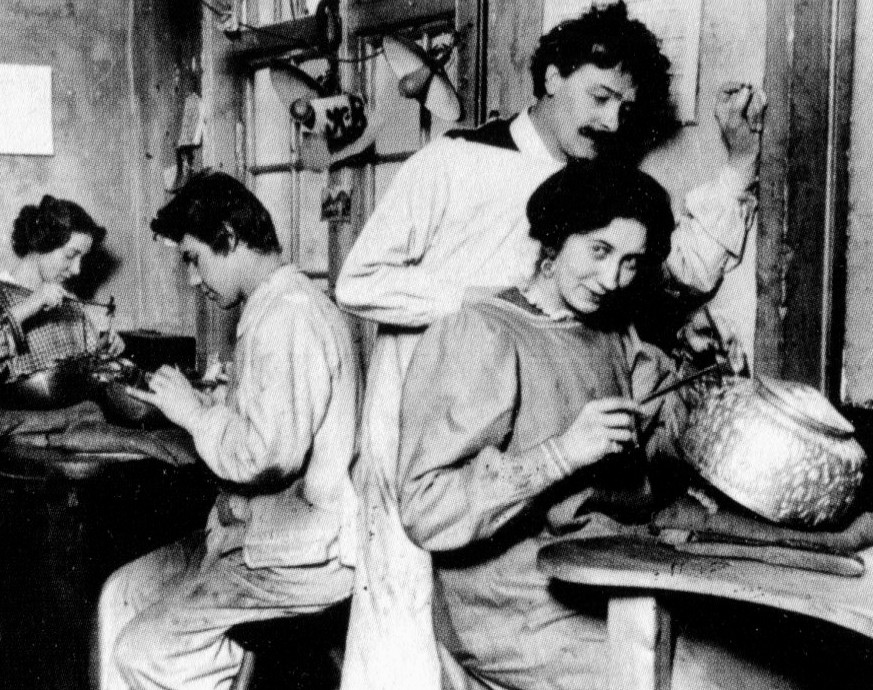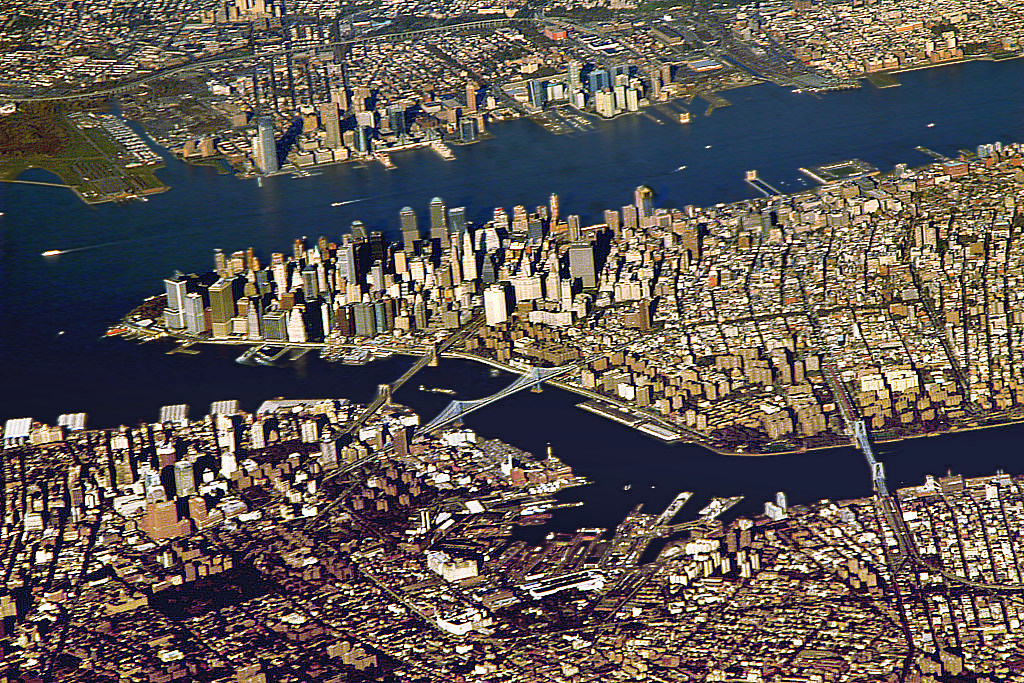|
Rådvad
Raadvad, or Rådvad is a former industrial development located on both sides of the Mølleåen river which at this point marks the border between Lyngby-Taarbæk and Rudersdal municipalities in the northern suburbs of Copenhagen, Denmark. It was built around a watermill in the second half of the 18th century and has given name to a well-known Danish brand of knives and other kitchen equipment. The buildings are now all heritage listed. They include Raadvad Kro from 1861 and a hostel based in a former school from 1894. Other buildings include a centre for building conservation and a local nature school. History On 30 April 1643, Christian Alckenbrecht obtained a royal license to build the first watermill at the site. Four years later he ran three waterworks at the site: A sharpening mill, a hammer mill and a fulling mill. The installations were destroyed by Swedish soldiers in 1658 but reopened in 1664, now as a gunpowder and sharpening mill. In 1671, the king took over ownership ... [...More Info...] [...Related Items...] OR: [Wikipedia] [Google] [Baidu] |
Georg Jensen
Georg Arthur Jensen (31 August 1866 in Rådvad – 2 October 1935 in Copenhagen) was a Danish silversmith and founder of Georg Jensen A/S (also known as Georg Jensen Sølvsmedie). Early life Born in 1866, Jensen was the son of a knife grinder in the town of Raadvad, just to the north of Copenhagen. Jensen began his training in goldsmithing at the age of 14 in Copenhagen. His apprenticeship with the firm Guldsmed Andersen, ended in 1884, and this freed Georg to follow his artistic interests. In 1884 he became a journeyman and in 1887 he enrolled at the Royal Danish Academy of Fine Arts (Kongelige Danske Kunstakademi), where he studied sculpture with Theobald Stein. He graduated in 1892 and began exhibiting his work. After graduation he started studying ceramics with Joachim Petersen (1870–1943). Although his ceramic sculptures was well received, making a living as a fine artist proved difficult and he turned his hand to the applied arts. First as a modeller at the ... [...More Info...] [...Related Items...] OR: [Wikipedia] [Google] [Baidu] |
Jægersborg Dyrehave
Dyrehaven ( Danish 'The Deer Park'), officially Jægersborg Dyrehave, is a forest park north of Copenhagen. It covers around . Dyrehaven is noted for its mixture of huge, ancient oak trees and large populations of red and fallow deer. In July 2015, it was one of the three forests included in the UNESCO World Heritage Site inscribed as Par force hunting landscape in North Zealand. All entrances to the park have a characteristic red gate; one of the most popular entrances is Klampenborg gate, close to Klampenborg station. All the entrance gates have an identical gate house attached to them, which serve as the residences of the forest wardens. Dyrehaven is maintained as a natural forest, with the emphasis on the natural development of the woods over commercial forestry. Old trees are felled only if they are a danger to the public. It has herds of about 2100 deer in total, with 300 Red Deer, 1700 Fallow Deer and 100 Sika Deer. Dyrehaven is also the venue for the Hermitag ... [...More Info...] [...Related Items...] OR: [Wikipedia] [Google] [Baidu] |
Capital Region Of Denmark
The Capital Region of Denmark ( da, Region Hovedstaden, ) is the easternmost administrative region of Denmark. The Capital Region has 29 municipalities and a regional council consisting of 41 elected members. As of 1 August 2021 the chairperson is Lars Gaardhøj, who is a member of the Social Democrats party of Denmark. The Capital Region was established on 1 January 2007 as part of the 2007 Danish Municipal Reform. This reform abolished the traditional counties (Danish plural: , singular: ) and created five regions. As part of this reform 271 smaller municipalities were merged into larger units reducing the number of municipalities to 98. The reform dramatically diminished the power of regional governments while enhancing that of local government and that of the central government in Copenhagen. It was implemented on 1 January 2007. Unlike the former counties (1970–2006) (Danish ', literally 'county municipality') the regions are not municipalities and are thus not all ... [...More Info...] [...Related Items...] OR: [Wikipedia] [Google] [Baidu] |
Villages In Denmark
A village is a clustered human settlement or community, larger than a hamlet but smaller than a town (although the word is often used to describe both hamlets and smaller towns), with a population typically ranging from a few hundred to a few thousand. Though villages are often located in rural areas, the term urban village is also applied to certain urban neighborhoods. Villages are normally permanent, with fixed dwellings; however, transient villages can occur. Further, the dwellings of a village are fairly close to one another, not scattered broadly over the landscape, as a dispersed settlement. In the past, villages were a usual form of community for societies that practice subsistence agriculture, and also for some non-agricultural societies. In Great Britain, a hamlet earned the right to be called a village when it built a church. [...More Info...] [...Related Items...] OR: [Wikipedia] [Google] [Baidu] |
Copenhagen Metropolitan Area
The Copenhagen metropolitan area or Metropolitan Copenhagen ( da, Hovedstadsområdet, , literally "The Capital Area") is a large commuter belt (the area in which it is practical to commute to work) surrounding Copenhagen, the capital of Denmark. It includes Copenhagen Municipality, Frederiksberg and surrounding municipalities stretching westward across Zealand. It has a densely-populated core surrounded by suburban settlements. The metropolitan area has several current definitions and also some historical, now defunct, definitions. The most widely accepted is the area which is strategically managed by the Finger Plan. The modern post 2007 version includes the four provinces ''Københavns by'' (Copenhagen city), ''Københavns omegn'', ''Nordsjælland'' and ''Østsjælland'', with a total land area of 2 778 km² and over 2 million inhabitants (16 March 2018;updated statistics from 1 January 2018 on cities (Danish ''byer'', (singular) ''by'') published later). It sh ... [...More Info...] [...Related Items...] OR: [Wikipedia] [Google] [Baidu] |
Cities And Towns In The Capital Region Of Denmark
A city is a human settlement of notable size.Goodall, B. (1987) ''The Penguin Dictionary of Human Geography''. London: Penguin.Kuper, A. and Kuper, J., eds (1996) ''The Social Science Encyclopedia''. 2nd edition. London: Routledge. It can be defined as a permanent and densely settled place with administratively defined boundaries whose members work primarily on non-agricultural tasks. Cities generally have extensive systems for housing, transportation, sanitation, utilities, land use, production of goods, and communication. Their density facilitates interaction between people, government organisations and businesses, sometimes benefiting different parties in the process, such as improving efficiency of goods and service distribution. Historically, city-dwellers have been a small proportion of humanity overall, but following two centuries of unprecedented and rapid urbanization, more than half of the world population now lives in cities, which has had profound consequences for g ... [...More Info...] [...Related Items...] OR: [Wikipedia] [Google] [Baidu] |
Georg Jensen A/S
Georg Jensen A/S (originally Georg Jensens Sølvsmedie A/S) is a Danish designer company with focus on silverware. It was founded by silversmith Georg Jensen in 1904. History After finishing at the Royal Academy of Fine Arts in 1892, Georg Jensen tried his hand at clay sculptures, before moving to the applied arts. He began as a modeller at the Bing & Grøndahl porcelain factory and, in 1898 he had small pottery workshop. In 1901, he abandoned ceramics and resumed work as a silversmith and designer with the master, Mogens Ballin. This led Jensen to make a landmark decision, when in 1904, he risked what small capital he had and opened his own little silversmithy at 36 Bredgade in Copenhagen. In 1909, Jensen opened his first shop in Berlin, and the following year, he received a gold medal for the work he displayed at the International Exhibition in Brussels. In 1912, he opened a larger workshop and a larger retail shop in Copenhagen. The company's Berlin store entered a perio ... [...More Info...] [...Related Items...] OR: [Wikipedia] [Google] [Baidu] |
Gentofte Municipality
Gentofte Kommune is a municipality ( Danish, '' kommune'') in the Capital Region of Denmark (''Region Hovedstaden'') on the east coast of the island of Zealand (''Sjælland'') in eastern Denmark. It covers an area of , and has a total population of 74,548 (1 April 2014). Since 17 May 2021, its mayor has been Michael Fenger, a member of the Conservative People's Party (''Det Konservative Folkeparti''). Gentofte is the most wealthy municipality in Denmark and consists of several fashionable Copenhagen suburbs such as Hellerup and Charlottenlund. The municipality is an amalgamation of three formerly independent towns, and several other local settlements, all close to one another. The site of its municipal council is in Charlottenlund. The three original towns were Gentofte, Vangede and Ordrup. It later included Tuborg, Skovshoved, Dyssegård, Hellerup, Jægersborg, and Klampenborg. Neighboring municipalities are Lyngby-Taarbæk to the north, Gladsaxe to the west, and Copenhage ... [...More Info...] [...Related Items...] OR: [Wikipedia] [Google] [Baidu] |
Port Ved Rådvad Kro
A port is a maritime facility comprising one or more wharves or loading areas, where ships load and discharge cargo and passengers. Although usually situated on a sea coast or estuary, ports can also be found far inland, such as Hamburg, Manchester and Duluth; these access the sea via rivers or canals. Because of their roles as ports of entry for immigrants as well as soldiers in wartime, many port cities have experienced dramatic multi-ethnic and multicultural changes throughout their histories. Ports are extremely important to the global economy; 70% of global merchandise trade by value passes through a port. For this reason, ports are also often densely populated settlements that provide the labor for processing and handling goods and related services for the ports. Today by far the greatest growth in port development is in Asia, the continent with some of the world's largest and busiest ports, such as Singapore and the Chinese ports of Shanghai and N ... [...More Info...] [...Related Items...] OR: [Wikipedia] [Google] [Baidu] |
.jpg)





